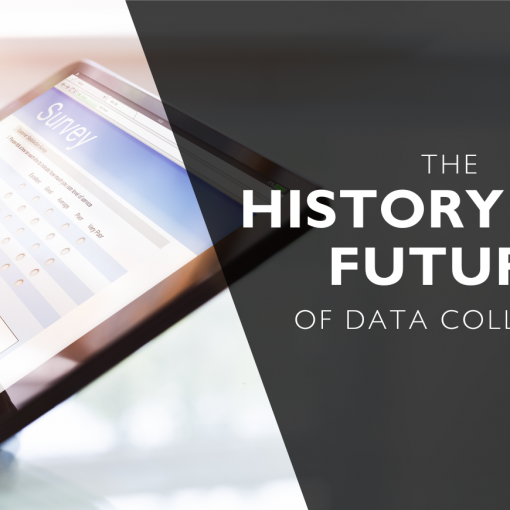Market research fieldwork has long been an integral part of understanding consumers, but how it’s conducted has changed dramatically over the years. Let’s take a look at what fieldwork is, how it used to be done, and how it’s done today.
In this article, I discuss:
- What is market research fieldwork?
- How was fieldwork conducted in the past?
- Today’s fieldwork in market research
- Key areas of fieldwork
- The benefits
What is Market Research Fieldwork?
All in all, fieldwork is the practical data collection conducted either in-person or virtually. Realistically, most fieldwork today is done online, even though that’s not the traditional definition. It involves engaging with research participants, whether that’s through in-person interviews, focus groups, phone calls, or online surveys. The goal is to gather insights directly from a target audience.
The term’s origin comes from that people used to have to go into the field to talk to consumers.
Fieldwork also can allow researchers to observe behaviors, explore attitudes, and gain perspectives from people in their natural environments. This hands-on approach provides a level of insight that can’t be replicated with secondary research alone.
While fieldwork is often associated with qualitative techniques like in-depth interviews, it’s also used extensively for quantitative research through methods like telephone surveys or online polls. Essentially, any primary research where data is collected first-hand can fall under the umbrella of fieldwork.
How Was Fieldwork Done in the Past?
In decades past, fieldwork meant teams of researchers fanning out with clipboards and question guides to gather data wherever their audience could be found. Shopping malls, street corners, conferences, people’s homes – if insights were needed, researchers went out to find them – one step at a time – literally.
Generally, traditional fieldwork techniques include:
Door-to-Door Interviews: Researchers literally go door-to-door in neighborhoods to speak with residents and gather their opinions.
Mall Intercepts: Teams station themselves near entrances or busy areas of malls to intercept shoppers and conduct quick interviews.
Focus Groups: Participants gather in a central facility, like a hotel conference room, and guided through an in-depth group discussion.
In-Home Visits: For a more contextual understanding, researchers would visit people’s homes to interview them.
Telephone Surveys: Before online surveys, phone surveys were a key way to reach a distributed sample. Researchers call respondents randomly from a list.
Paper Surveys: Respondents would fill out long paper questionnaires and mailed them back in. Researchers would hand out surveys at college campuses as well.
As you can imagine, fieldwork used to be extremely labor and time-intensive. Researchers had to travel to gather data, and then transcription and analysis were manual. But the benefit was rich, experiential insights from observing behaviors and discussions first-hand.
How is Fieldwork Conducted Today?
The digital age has enabled fieldwork to become much more efficient, automated, and data-driven. While traditional tactics like in-person focus groups are still used, technology now allows most field research to be conducted remotely. The three main developments are:
1. Online Survey Panels
One of the biggest shifts has been the rise of online survey panels and research communities. These are platforms where people willingly sign up to participate in all sorts of surveys and studies. Millions of panelists across every demographic means researchers can easily deploy a study to a targeted audience within days.
Online surveys allow data to be gathered remotely and cost-effectively from people all over. With survey programming, complex questionnaires can be created to branch and filter based on responses. Analytics provide instant insights once the data is in.
Read next: How to Conduct Your Own Research While Outsourcing Quality Data Collection
2. Virtual Qualitative Research
Focus groups and interviews have also gone digital. Rather than gather in person, participants can join online via video software. This allows for broader geographical participation without anyone having to travel.
Researchers can still observe reactions and behaviors – sometimes better than in person. People may even feel more comfortable opening up in their own environment. Transcription and sharing of recordings are also much easier.
3. Mobile Data Collection
One of the latest shifts has been towards mobile research apps and techniques. Researchers can design mobile surveys and ethnographies where participants submit data from their smartphones as they go about their daily tasks.
This allows for research in motion and real-time reactions versus post-experience surveys. Photos, videos, app usage, social media, and geolocation are incorporated for a rich mobile-first experience. Ensure that everything is mobile-first to ensure consumers on their smartphones can participate just like people on computers can.
The Benefits of Traditional vs. Online Fieldwork
At last, from crowded malls to smartphone apps, fieldwork continues to evolve. But what are the relative benefits of those old-school, face-to-face approaches compared to efficient digital techniques?
Benefits of traditional in-person fieldwork:
- Direct engagement and observation of behaviors, reactions, body language
- Ability to validate participants (e.g. screening criteria, ID checks)
- Appeals to certain demographics and topics (e.g. elderly may prefer in-person)
- Controlled environments (e.g. shopping simulations, mock stores)
- Intercept-style recruitment ensures participation from people not on research panels, reducing bias
- Creative exercises and materials can be incorporated
- Rapid Clarification: Researchers can ask for immediate clarification
Benefits of online fieldwork:
- Cost and time savings (no travel or facility expenses)
- Access to a wider geography and sample diversity
- Larger sample sizes
- More representative groups
- Ability to reach niche, hard-to-find audiences
- Ease of use drives higher response rates in some cases
- Participants may feel more comfortable in their own setting
- Automated analysis and reporting for fast insights
- Environmental friendliness with no travel
Furthermore, the future of fieldwork focuses on blending digital efficiency with experiential relevance. For example, new techniques look to incorporate more interactive elements like gamification, AI, and virtual simulations to drive engagement. Rather than a wholesale shift to digital, brands should incorporate new tools while preserving a human-centered approach.
The Definition of Fieldwork Remains the Same
While techniques and technologies will continue advancing, the foundational goal of fieldwork remains constant – gaining on-the-ground insights from real people in their real environments. Whether it’s sending moderators out with clipboards or deploying an online community survey, the destination is the same: converting observations into actionable insights.
After all, humanity is at the heart of fieldwork. That’s why even with machine learning, artificial intelligence, and augmented reality gaining ground, the field researcher will remain an essential role. It’s a skillset and mindset that drives curiosity, empathy, and understanding – something no algorithm can replace.
For one thing, fieldwork will continue progressing with the times and technologies. But by valuing both rigorous data collection and human-centric observation, researchers can build understandings that resonate with audiences and inform smarter decisions. The tools will change, but quality insights that combine art and science will keep market research rooted in real-world relevance.




